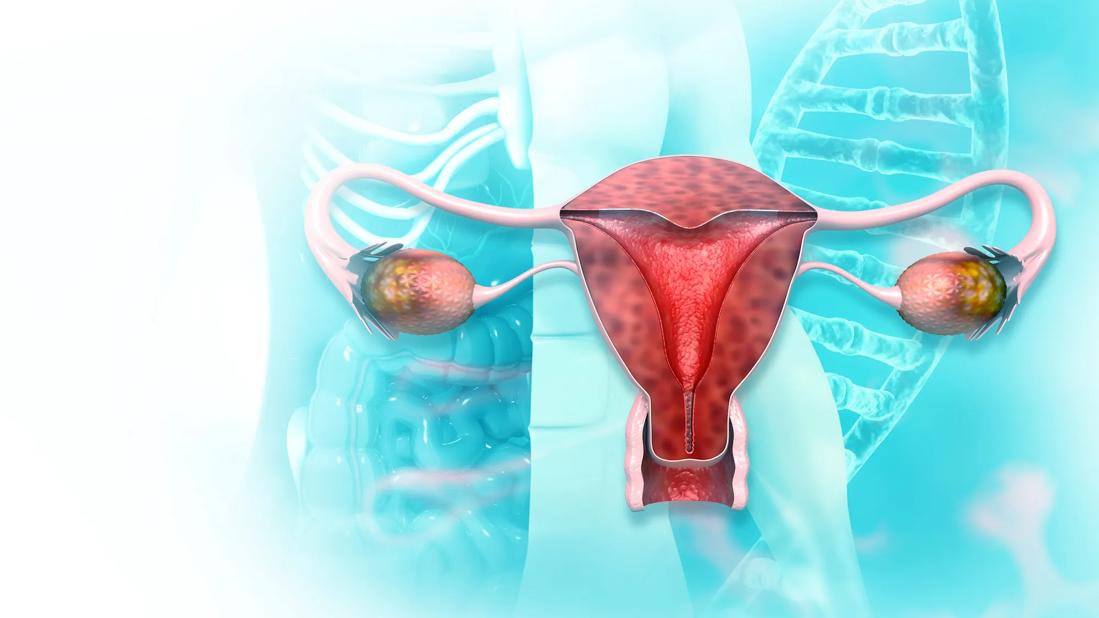Research helps identify patients who might benefit from adjuvant therapies

Risk factors for endometrioid endometrial cancer (EC) have been widely studied, but no comprehensive model exists to predict survival and guide clinical care. Now a new study by Cleveland Clinic physicians establishes and validates an EC risk prediction model using a large data set from the National Cancer Database.
Advertisement
Cleveland Clinic is a non-profit academic medical center. Advertising on our site helps support our mission. We do not endorse non-Cleveland Clinic products or services. Policy
The study identifies factors that predict worse survival for EC, and helps identify which patients might benefit more from adjuvant therapies in early stage patients, a key question for which there have been no consistent guidelines to date, says Mariam M. AlHilli, MD, a surgeon in the Department of Obstetrics and Gynecology at Cleveland Clinic, and first author on the study. She says the model doesn’t create prescriptive guidelines, but can be used by clinicians to discuss treatment options.
“It’s a tool physicians can use when counseling patients,” she says. “They can look at different scenarios and give the patient an estimate of survival, and help the patient make decisions about whether to receive adjuvant treatment or not.”
The paper was recently published in the journal Gynecologic Oncology.
Endometrioid endometrial cancer is a common cancer with a generally good five-year survival rate of 83%. However, existing tools to predict survival had room for improvement.
“The treatment paradigm varies by geography and institution, and there is no clear consensus on who should be receiving adjuvant therapy in early stage disease,” AlHilli explains. “So a lot of times these decisions are made on an individual basis.”
For the study, researchers used a data set from the National Cancer Database involving more than 42,000 patients with endometrioid endometrial cancer.
“We wanted to see if we could select the most significant risk factors to triage patients to adjuvant therapy versus no adjuvant therapy,” she says.
Advertisement
They looked at a number of risk factors, and determined that factors associated with worse survival included:
They also found that adjuvant therapy had a beneficial effect on survival in the majority of stage 1B patients, but only in one of the six risk groups in stage 1A.
Other groups have come up with similar risk prediction models, but the Cleveland Clinic study is the first to use the National Cancer Database and involve such a large cohort of patients, AlHilli says.
AlHilli’s team also validated their results with an internal cohort of patients at the Cleveland Clinic, she notes.
While the study did not bring a clear resolution as to which patients should receive adjuvant therapy, it does provide a framework for better decision-making, she says.
“The biggest take-home message is that there is a comprehensive and validated risk-scoring model that physicians can use to make a plan with their patients.”
Advertisement
Advertisement

ACOG-informed guidance considers mothers and babies

Prolapse surgery need not automatically mean hysterectomy

Artesunate ointment shows promise as a non-surgical alternative

New guidelines update recommendations

Two blood tests improve risk in assessment after ovarian ultrasound

Recent research underscores association between BV and sexual activity

Psychological care can be a crucial component of medical treatment

A multidisciplinary approach facilitates timely diagnosis and better treatment